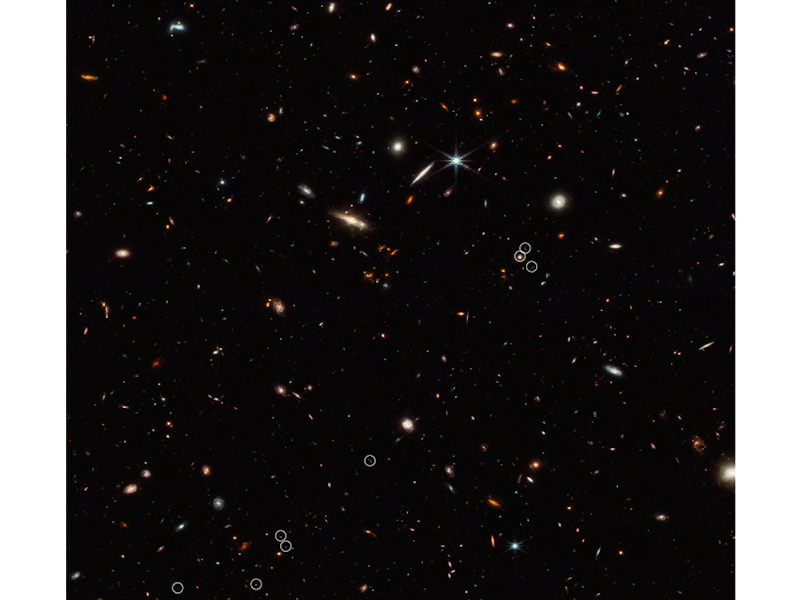Webb Image Reveals Numerous Galaxies Strung in a Line Along the Ancient Cosmic Web
The James Webb Space Telescope just found one of the cosmic web’s ancient strands.

In a new image from the James Webb Space Telescope (JWST), ancient galaxies are strung along one gargantuan cosmic thread like pearls on an antique necklace.
When astronomers peer into the deepest recesses of the night sky, they are looking back in time. Back in August 2022, JWST pointed toward the constellation Fornax (known as the Furnace) and gathered light from galaxies from when the universe was one-sixteenth of its current age. Astronomers analyzed this data and discovered an old strand of the universe's large-scale structure known as the cosmic web.
NASA and JWST officials published the new image of this survey and detailed the discovery from ASPIRE (A SPectroscopic survey of biased halos In the Reionization Era), the project which identified the filament on its quest to learn, among many things, about how the web initially formed.
This JWST NIRCam view reveals a filament of the cosmic web. The eight white circles outline the ancient galaxies that are strewn along on a diagonal path.
Across the universe
JWST officials published an image of the patch of sky that JWST’s NIRCam (Near-Infrared Camera) surveyed, and within it, eight white circles annotate the 10 distant galaxies astronomers noticed were gathered in a diagonal line; two of the circles contain more than one galaxy. These galaxies existed just 830 million years after the Big Bang.
The filament along which they are concentrated is 3 million light-years long. It’s part of a weblike structure that stretches across the universe, along which galaxies are connected yet separated by enormous voids.
In the middle of the cluster of three circles on the right side of the image, a galaxy shines bright as its central supermassive black hole spins material around outside its flanks. The result of this activity is that it shines very brightly. Active objects like this are known as quasars. According to NASA, this quasar “anchors” the filament.
“Galaxies are not scattered randomly across the universe. They gather together not only into clusters but into vast interconnected filamentary structures with gigantic barren voids in between,” JWST researchers wrote in the press release.
Galaxies are organized in groups, then clusters, and on progressively grander spatial scales, they are arranged along the filaments of the cosmic web. So learning about these strands can help astronomers better understand how galaxies are arranged into their cosmic locations.
This NASA simulation take the viewer on a flight through the cosmic web.
“I was surprised by how long and how narrow this filament is,” observational cosmologist and research team member Xiaohui Fan said in the Friday statement. “I expected to find something, but I didn't expect such a long, distinctly thin structure.”
The frontiers of cosmology
The next decade could see major breakthroughs in the field of cosmology, which is tasked with figuring out the essence of the universe and how it came to be the way it is today.
Images like the NIRCam view published on Thursday show that JWST observations can complement the research of other upcoming space missions, like the European Space Agency’s Euclid mission, scheduled to launch on July 1.
JWST has already revealed a ton of data about the universe, and it’s only been operating for a year. If more filaments like this are detected, the cosmic web’s secrets will continue to unravel.